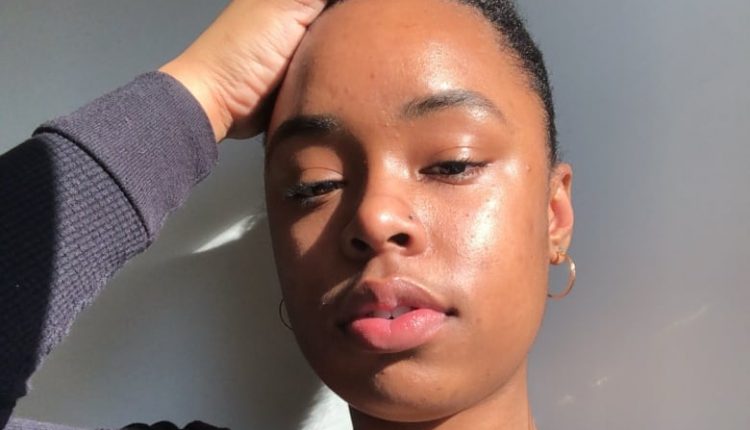TikTok’s That Woman is supposed to advertise wellness, however some say it does the alternative
She gets up early to work out, drinks smoothies, and keeps a journal.
She is That Girl, one of the latest trends on social media platforms such as YouTube, Instagram and TikTok – the hashtag #thatgirl on TikTok alone has over 800 million views.
The videos often show young women sharing their daily routines like waking up and eating. The visuals are usually picture-perfect – a bowl of sliced fruit with cereal or matching workout outfits.
The idea is to encourage others to become the best version of themselves. However, some experts argue that the trend might do the opposite, rather than empowering women to eat healthily and stay active.
“People don’t usually post random, representative snapshots of their everyday lives [life]”Said Dr. Elia Abi-Jaoude, a psychiatrist at SickKids Children’s Hospital in Toronto.
“If you keep watching the most carefully curated videos, you might think, ‘If everyone else is doing this, I should be doing the same.'”
A spin-off of old trends
Although That Girl videos became popular during the pandemic, similar versions have been around for years.
“We’re going through phases all the time, and that’s the new term for it. A few years ago it was the girl boss with her 10,000 planners, ”says Keiana Byfield, a 23-year-old who creates videos for YouTube in Whitby, Ontario.
Keiana Byfield, a 23-year-old from Whitby, Ontario who posts videos on YouTube, says wellness trends similar to That Girl have been around online for a long time. (Submitted by Keiana Byfield)
The term Girlboss was made famous in 2014 by Sophia Amoruso, founder of Nasty Gal, a women’s clothing retailer based in Los Angeles. The term was used online to encourage women to work hard, look good, and be financially successful.
This girl isn’t an inherently toxic trend, says Byfield.
“The problem is how people perceive things,” she said. “It’s okay to be inspired by parts of a trend, but you don’t have to be the whole.”
Live the perfect life
Imran Rai, a 22-year-old Vancouver model who also creates YouTube videos, says that before the latest trend hit, young women shared makeup tutorials and morning routines on sites like YouTube.
It differs from That Girl videos, however, in that young women no longer just share their personal routines, but rather strive for an idealized version of what a perfect woman does.
 Imran Rai is a 22-year-old model from Vancouver who posts videos on YouTube. She says the latest trend is encouraging some women to strive for an idealized version of how they think this girl should behave and look. (Submitted by Imran Rai)
Imran Rai is a 22-year-old model from Vancouver who posts videos on YouTube. She says the latest trend is encouraging some women to strive for an idealized version of how they think this girl should behave and look. (Submitted by Imran Rai)
“It started with morning routines and then moved on to what this girl eats for dinner,” said Rai.
“Now people are following someone’s whole day structure.”
Rai, who talks about past eating disorders on her YouTube channel, says she knows how social media fosters feelings of insecurity and mental illness.
“When you’re on social media, you have to be very careful about what accounts you’re following and how you feel about them,” she said.
Jillian Murray, a 22-year-old from London, Ontario, says the pressures some young women feel about being That Girl led her to post a YouTube video about the cons of the trend. (Submitted by Jillian Murray)
Jillian Murray, a 22-year-old from London, Ontario, posted a video on YouTube in May highlighting issues with the trend.
“I think it makes me feel bad. It seems like there is only one way to be productive,” she said.
“If you don’t get up at 6 a.m., then you are not that girl and you are not good enough.”
Something is missing
Vanessa Faga, a 21-year-old from Montreal who posts That Girl content for TikTok, says her experiences were different.
She says having a daily routine and sharing it with others helps her stay motivated, and that’s something she wanted to do long before routines came under the That Girl label.
“I woke up every morning and felt that something was missing,” she said.
“For me it was getting up in the morning and making a smoothie. These habits helped my personal growth and made me feel better. I was motivated to see other people and to force myself into healthier habits in my everyday life.”
 Vanessa Faga, a 21-year-old from Montreal, says posting social media videos of her morning routines helped her maintain a healthy lifestyle. (Submitted by Vanessa Faga)
Vanessa Faga, a 21-year-old from Montreal, says posting social media videos of her morning routines helped her maintain a healthy lifestyle. (Submitted by Vanessa Faga)
An element of escapism
Still, these trends can sometimes make women feel inadequate, says Jennifer Mills, associate professor of psychology at York University in Toronto.
“We see from our research studies that [fitness or wellness content] not so much motivated or encouraged into positive behavior as it evokes feelings of inadequacy, “said Mills.
“’I’m not good enough’, ‘I’m not healthy enough’ or ‘I’m not thin enough’. These types of social comparison can make women feel worse.
But even that can’t stop women from keeping up with the content, she said.
“It could be the pursuit of tips, information, or advice, but it could also be more subconscious,” Mills said.
“You could just switch off and dream about how wonderful life would be if you had a healthy diet and lost weight.


Comments are closed.